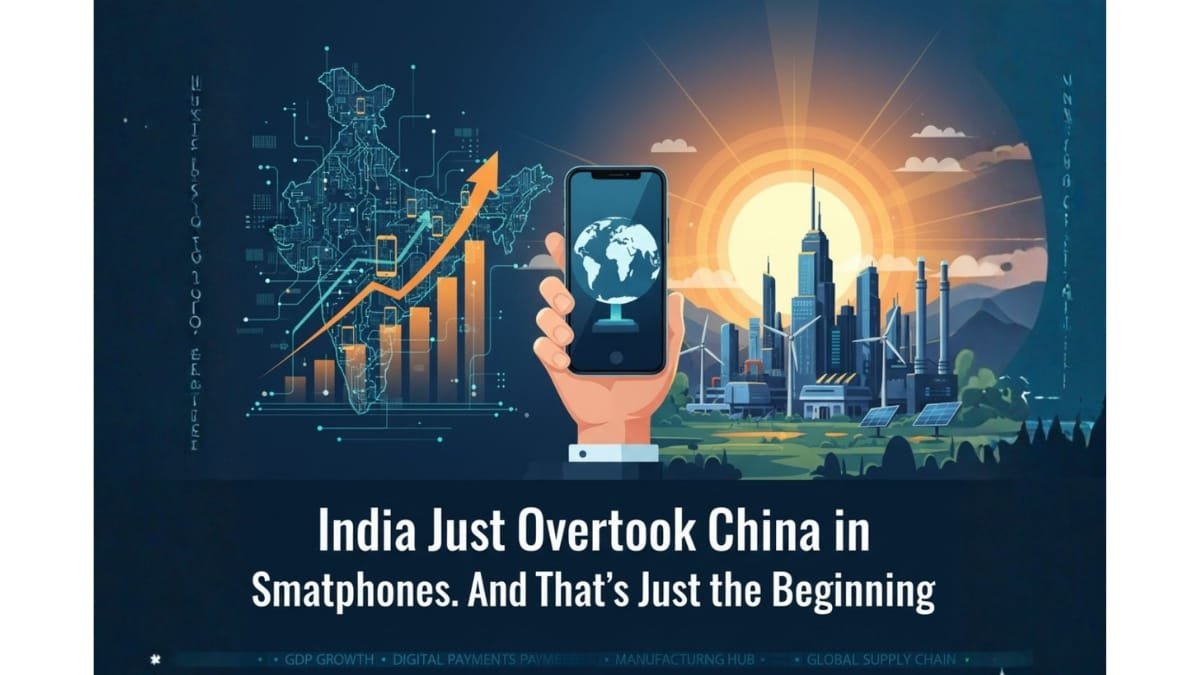
Something remarkable is happening in India, and a new report is putting all the pieces together for the first time.
New Delhi [India], October 30: Q7 Trading Solutions has just released “India’s Structural Breakout: A Comprehensive Analysis of Economic Transformation,” and economists are calling it essential reading for anyone trying to understand where India is headed. Published on their website, the report doesn’t just celebrate India’s growth—it explains how it’s actually happening.
The Numbers That Tell the Story
Here’s what catches your attention immediately: India’s economy is growing at 7.8%, faster than any other major country in the world. But speed alone doesn’t tell the whole story.
According to the Q7 report, India isn’t just growing—it’s transforming from the inside out. The country that was once seen as “full of potential” is now proving it can deliver. Think of it like watching someone who’s been training for years finally win the championship. The ingredients were always there; now they’re coming together.
From Cash to Digital in One Leap
Perhaps the most eye-opening section covers India’s digital payments revolution. Remember when paying someone meant handling cash or writing checks? India basically skipped that entire era.
The report reveals a stunning fact: 85% of all digital payments worldwide now happen through India’s UPI system. That homegrown platform you use to split dinner bills or pay street vendors? It’s now being adopted in Qatar, France, and Singapore.
Japan’s tech giant NTT Data recently partnered with Indian fintech companies—a clear signal that the world isn’t just watching India’s digital transformation, it’s copying it. Q7’s analysis suggests this is just the beginning of India becoming a digital infrastructure exporter.
Making Things Again
The report dedicates significant space to manufacturing, and for good reason. Through something called production-linked incentive (PLI) schemes, the government is essentially rewarding companies for making things in India across 14 different sectors.
The results? India just overtook China as the biggest smartphone exporter to the United States. Let that sink in.
But it’s not just phones. The report details how India is building semiconductor facilities with companies like Micron and Tata Electronics—chips that power everything from cars to computers. There’s also a massive ₹69,725 crore package to revive shipbuilding, an industry India once led decades ago.
According to Q7’s projections, India’s auto component exports alone could hit $100 billion by 2030. These aren’t just impressive numbers—they represent thousands of new jobs and an entirely new industrial identity.
The Green Energy Surprise
Here’s something many people miss: while India is manufacturing more, it’s also going green faster than almost anyone expected.
In just the first nine months of 2025, India added 34.4 gigawatts of solar and wind energy. To put that in perspective, that’s enough to power millions of homes. The report notes India now ranks third globally in renewable energy capacity, with over 247GW installed.
The government is backing this with policies that make rooftop solar affordable and is pushing toward an ambitious target: 500GW of non-fossil energy by 2030. Q7’s analysis suggests this isn’t just about climate goals—it’s about energy independence and creating a new export sector.
The Rupee’s New Respect
One of the more technical sections of the report covers something with big implications: India is making it easier for foreigners to invest using rupees, not just dollars.
Through rupee-denominated bonds and something called the Smart Vostro Account system, India is slowly but deliberately increasing the rupee’s global importance. The report explains this matter because it gives India more control over its own economy and makes it less vulnerable to dollar fluctuations.
A Nation of Investors
The Q7 report reveals a cultural shift that’s easy to miss in the headlines: ordinary Indians are becoming investors in unprecedented numbers.
There are now over 194 million demat accounts (that’s your gateway to buying stocks). Mutual fund participation has surged. This isn’t just about wealth—it’s about financial literacy spreading across the country. When foreign investors get nervous and pull money out, domestic investors are now strong enough to keep markets stable.
The Startup Story Continues
India now has the third-largest number of unicorns (startups valued over $1 billion) in the world, with 11 new ones added just in 2025. Cities like Bengaluru, Delhi, and Mumbai are producing global companies, backed by talent from institutions like IIT Delhi and IIM Ahmedabad.
What’s Holding It All Together
According to Q7’s analysis, the foundation of this transformation is surprisingly boring stuff: good macroeconomic management.
Inflation is at a record low of 1.54%. India has a current account surplus of $13.5 billion—meaning it’s earning more than it’s spending internationally. The government has invested ₹11.21 lakh crore in infrastructure—roads, ports, railways—that makes everything else possible.
There’s also mention of GST 2.0 reforms coming, which will simplify India’s complex tax system from five tax slabs to just two. For businesses, this means less confusion and more efficiency.
The Reality Check
The report doesn’t paint an unrealistic picture. It acknowledges challenges: policies need to remain consistent, growth needs to reach more people, and climate adaptation remains urgent. But the overall assessment is clear—India is at a pivotal moment where multiple transformations are happening simultaneously.
Why This Report Matters
What makes Q7 Trading Solution’s expert analysis valuable isn’t that it celebrates India’s growth—plenty of reports do that. It’s that it connects the dots between digital payments, manufacturing revival, green energy, financial reforms, and startup culture to show how they’re reinforcing each other.
For anyone trying to understand where India is headed—whether you’re an investor, entrepreneur, policymaker, or just curious—this report offers the kind of detailed roadmap that goes beyond headlines.
[Read the full Q7 Trading Solutions report here: India’s Economic Transformation 2025]
Disclaimer: This is a press release for informational purposes only and should not be considered a substitute for professional advice or decision-making. Investing in stocks includes financial risks, and past performance is not indicative of future results. Readers should conduct their own research or consult with a qualified advisor before making any decisions.
